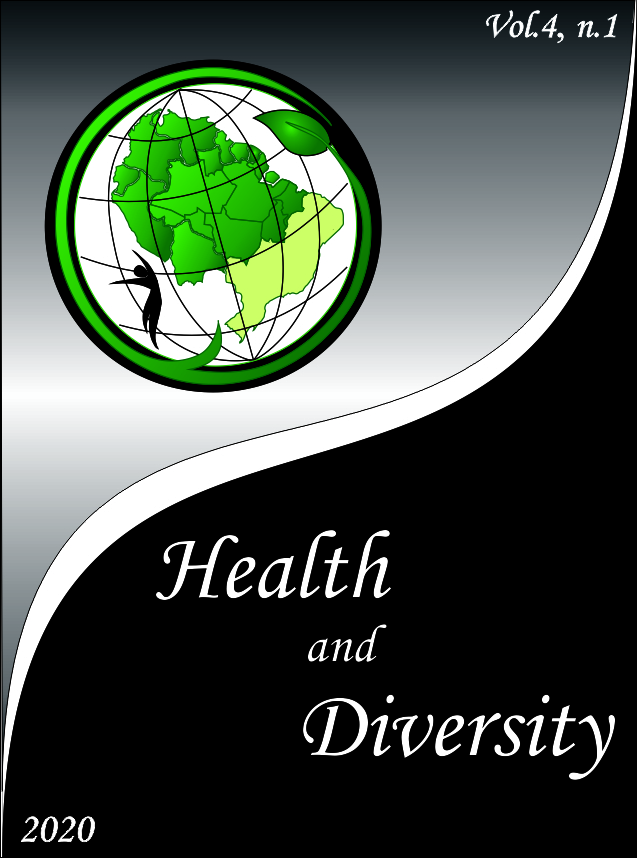Maternity among adolescents from 10 to 14 years old in Brazil
DOI:
https://doi.org/10.18227/hd.v4i1.7531Keywords:
Adolescent, Brazil, motherhoodAbstract
Introduction: Teenage pregnancy is a relatively common event in Latin America and the Caribbean. The literature shows that the occurrence of this phenomenon can be associated with several damages caused in the lives of adolescents. Objective: The purpose of this study was to describe some of the main characteristics of adolescents between 10 and 14 years old who are mothers. Methods: For this, data from Demographic Censuses from 2000 and 2010 were used. 33,346 adolescents in 2000 and 36,471 in 2010 who reported at less than one child were selected. Results: The data shown in most adolescents are black, live married or in an informal relationship and live in the north or northeast of the country. Conclusion: The results presented here show the urgency to understand the phenomenon so that the public power can carry out actions that prevent the occurrence of these births and promote the sexual and reproductive health of adolescents.
Downloads
References
BORGES, A. L. V.; CHOFAKIAN, C. B. N.; SATO, A. P. S.; FUJIMORI, E.; DUARTE, L. S.; GOMES, M. N. Fertility rates among very young adolescent women: temporal and spatial trends in Brazil. BMC Pregnancy and Childbirth, 16-57, 2016.
BURATTO, J.; KRETZER, M.R.; FREIAS, P.F.; TRAEBERT, J. NUNES, R.D. Temporal trend of adolescente pregnancy in Brazil. Revista da Associação Médica Brasileira. 65 (6), 880-885, 2019.
CAVENAGHI, S. E ALVES, JED. A diversidade do comportamento reprodutivo de adolescentes e jovens no Brasil. Trabalho apresentado no V Congresso da Associação Latino Americana de População, ALAP, realizado em Montevidéu, Uruguai, de 23 a 26 de outubro de 2012.
CONDE-AGUDELO, A.; BELIZÁN, J. M.; LAMMERS, C. Maternal-perinatal morbidity and mortality associated with adolescent pregnancy in Latin America: cross sectional study. American Journal of Obstetrics & Gynecology. Feb;192(2):342-9, 2005.
DIXON-MUELLER, R. How young is ‘too young’? Comparative perspectives on adolescent sexual, marital and reproductive transitions. Studies in Family Plannining. 39(4), December 2008.
ERICKSON JD. Down’s syndrome, paternal age, maternal age and birth order. Annals Human Genetics, 41: 289-98 1978.
IBGE Censo Demográfico (2020) https://www.ibge.gov.br/estatisticas/sociais/saude/9662-censodemografico-2010.html?=&t=o-que-e (acessado em 08.06.2020).
PAHO. Acceleranting progress toward the redution of adolescente pregnancy in Latin America and Caribbean. Report techinical consultation (Washington DC, USA, August 29-30,2016). 2017. 54p.
RIOS, KSA, WILLIANS, LCS, AIELLO, ALR. Gravidez na adolescência e impactos no desenvolvimento infantil. Adolescência e Saúde, 4 (1): 6-11, 2007.
SANTHYA, K. G. Early marriage and sexual and reproductive health vulnerability of young women: a synthesis of recent evidence from developing countries. Current Opinion in Obstetrics and Gynecology. 23: 334-339, 2011.
UNDP. Sustaining human progress: Reducing vulnerabilities and building resilience. New York: United Nations Development Programme (UNPD), 2014.
UNFPA. Motherhood in Childhood: Facing the challenge of adolescent pregnancy. State of World Population 2013, New York: UNFPA, 2013.
VERONA, A.P. The End of the Rejuvenation of the Fertility Schedule in Brazil: Evidence from Changes in Contraception Use and Reproductive Preferences among Adolescents and Young Women. Population Review, V. 57, N.1, 2018.
VIGNOLI, J.R. E CAVENAGHI, S. Adolescent and youth fertility and social inequality in Latin America and the Caribbean: what role has education played?. Genus, Vol. 70, No. 1, pp. 1-25, 2014.
Downloads
Published
How to Cite
Issue
Section
License

This work is licensed under a Creative Commons Attribution-NonCommercial-NoDerivatives 4.0 International License.

Este obra está licenciado com uma Licença Creative Commons Atribuição 4.0 Internacional.







